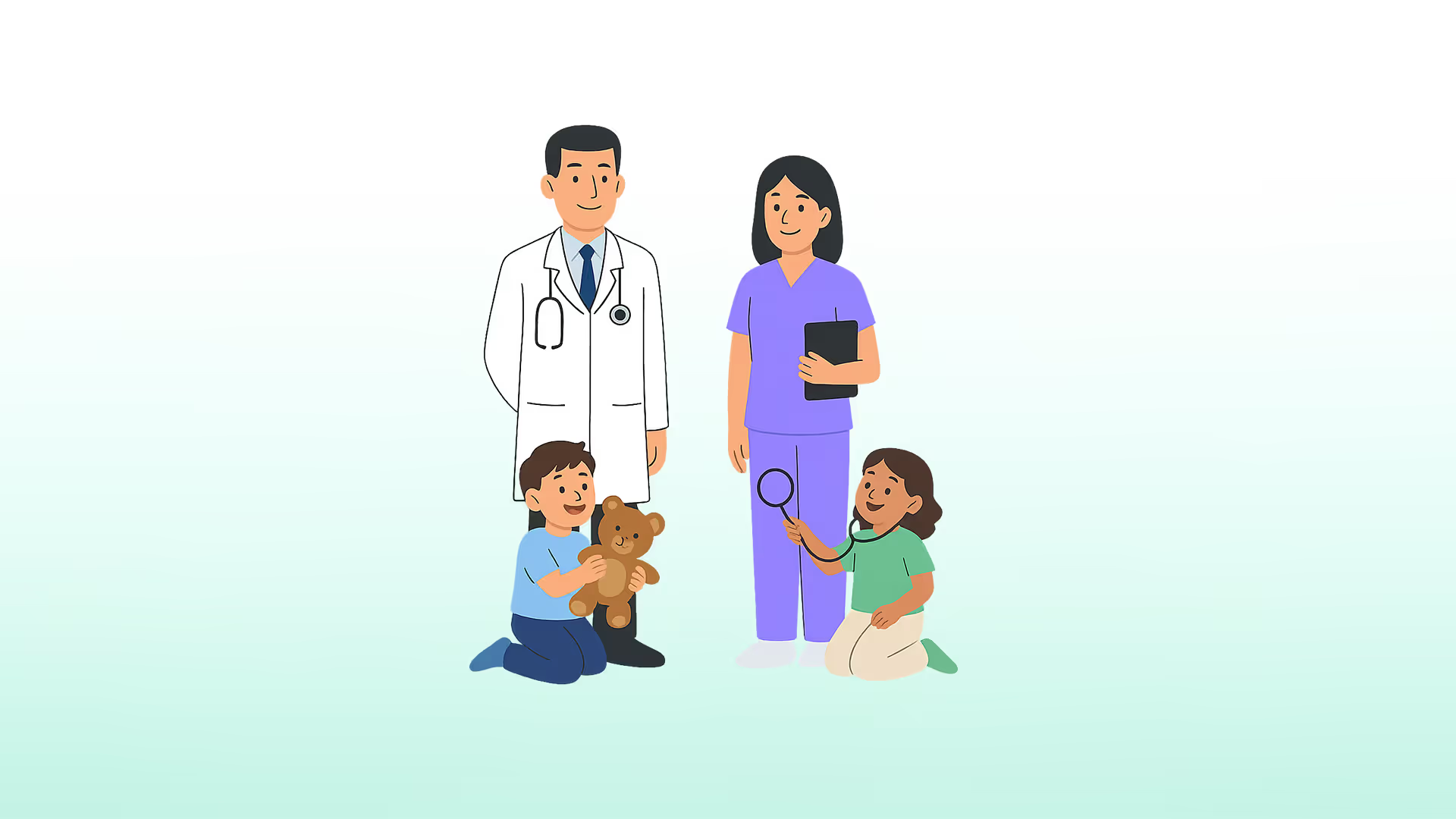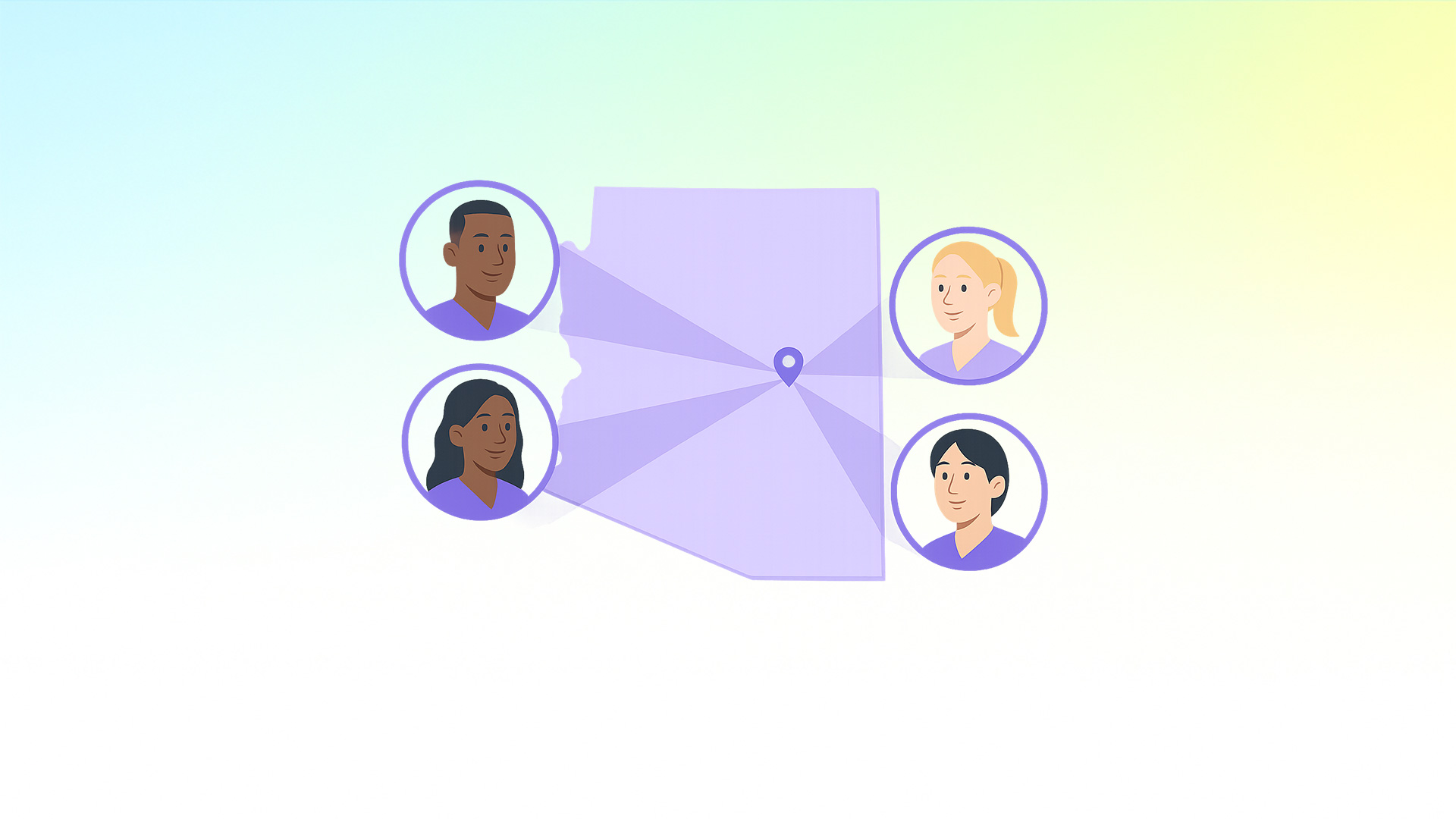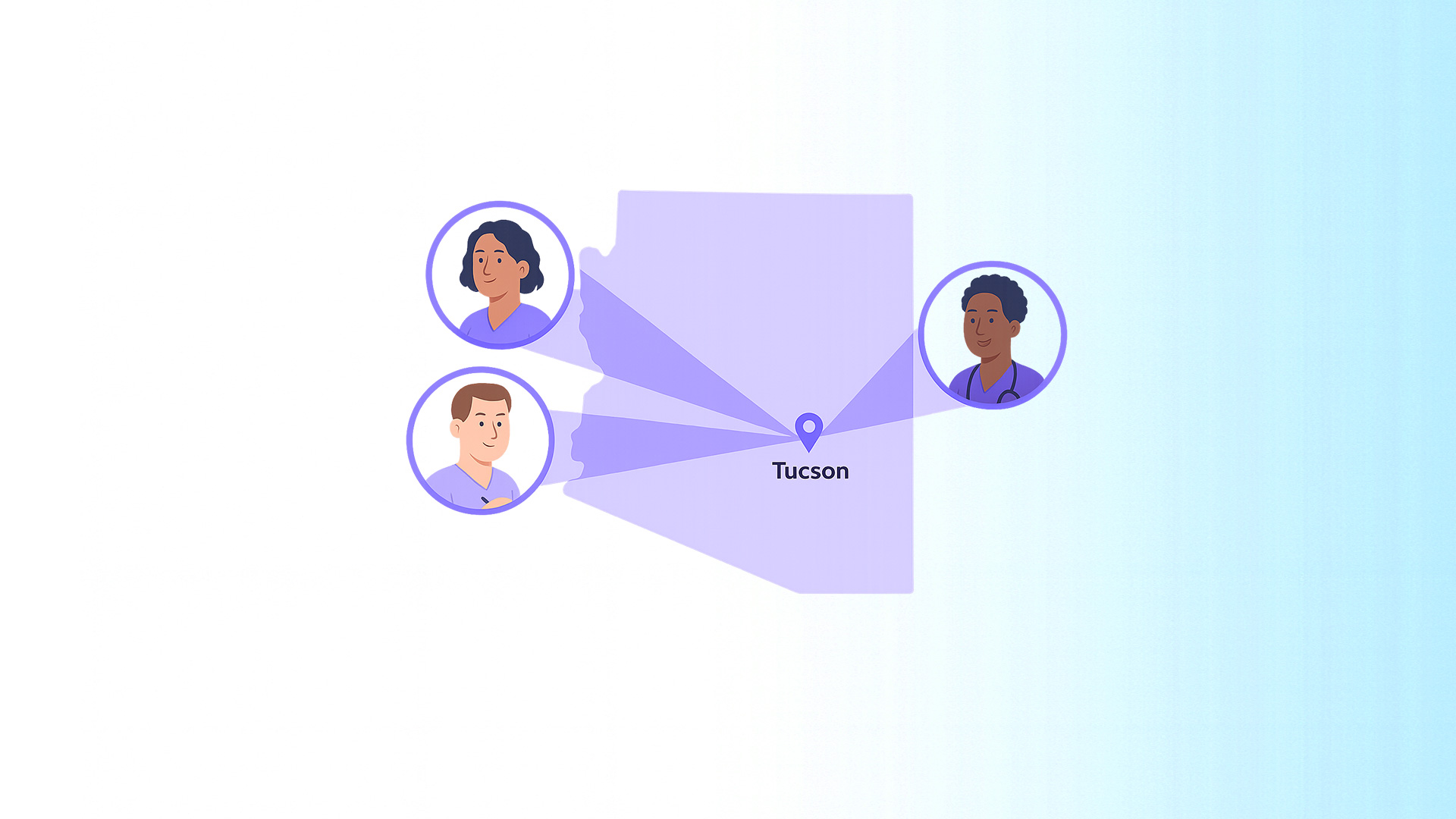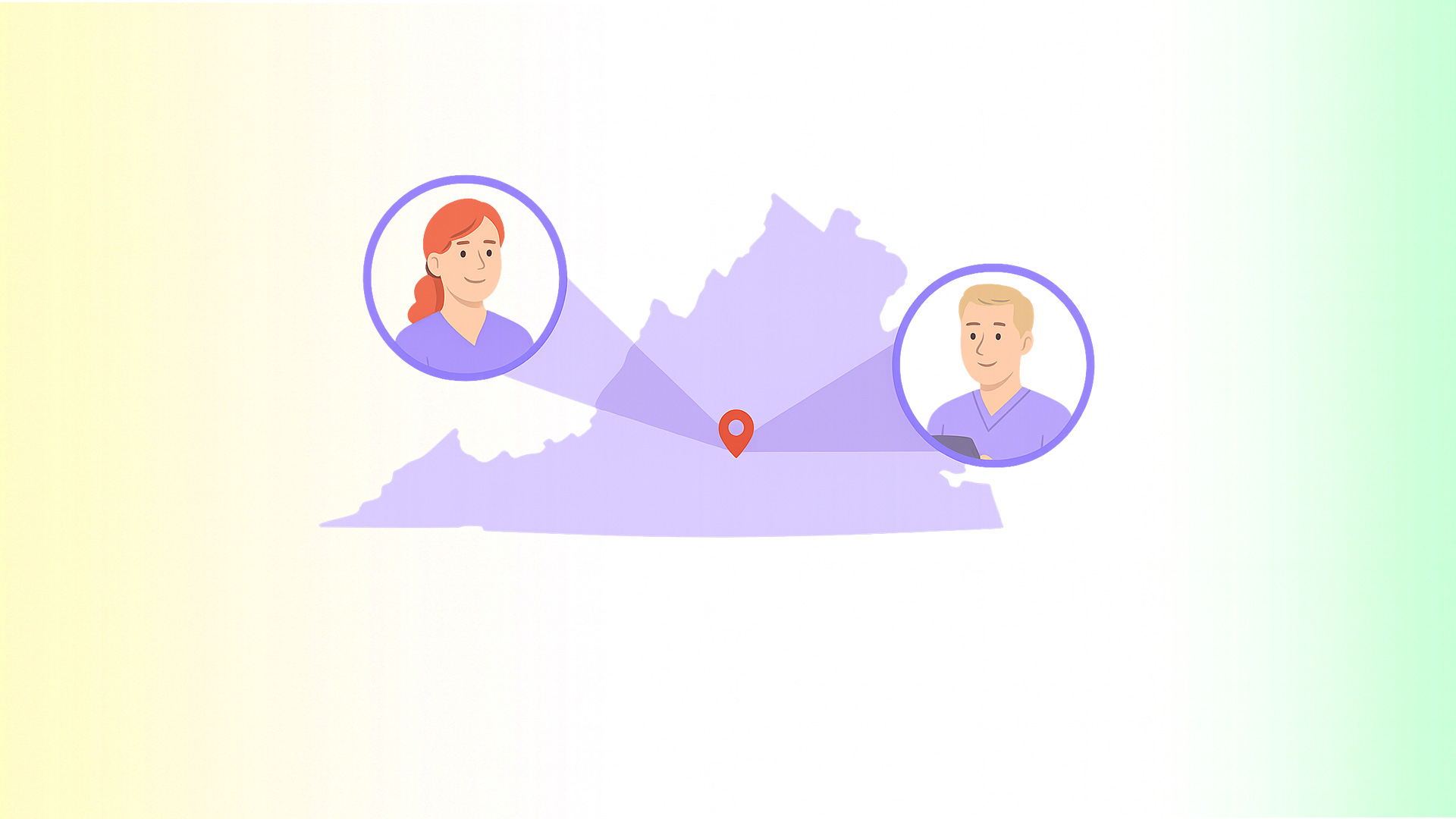The fastest and most reliable way to find child & adolescent psychiatry NP preceptors is by combining a focused search on providers who specialize in youth mental health with support from preceptor matching services. These preceptors play a critical role in helping NP students complete required clinical hours, gain hands-on experience, and graduate on time.
TL;DR – How to Find Child & Adolescent Psychiatry NP Preceptors
- Child & adolescent psychiatry preceptors are critical for PMHNP students to complete clinical hours, gain hands-on experience, and graduate on time.
- Demand far exceeds supply: nearly 20% of U.S. youth face mental health challenges, but there aren’t enough experienced preceptors or clinical sites to meet the need.
- Red flags matter: vague communication, lack of pediatric patients, or refusal to complete paperwork often lead to failed placements—spot them early.
- A step-by-step strategy works: targeting the right providers, asking the right clinical questions, and verifying patient populations helps students secure a fulfilling clinical experience.
- Preceptor matching services simplify the process: NPHub connects NP students with vetted psychiatry and mental health preceptors, streamlines paperwork, and ensures placements meet program requirements.
Why Child & Adolescent Psychiatry NP Preceptors Are So Hard to Find
Securing child and adolescent psychiatry NP preceptors is one of the biggest challenges facing today’s PMHNP students. As nurse practitioner students approach their required clinical rotations, many discover that finding a qualified preceptor in this specialty is harder than expected. A shortage of experienced preceptors, high demand across NP programs, and the unique requirements of youth mental health create barriers that can delay graduation.
This matters because child and adolescent psychiatry is a critical role in today’s psychiatric mental health landscape. During these clinical placements, preceptors supervise students as they practice psychiatric interviews, learn medication management for conditions like depression, anxiety, and bipolar disorder, and gain hands-on experience in treating patients with unique developmental needs. For many students, this is the rotation that turns theoretical knowledge into real-world skills.
But the reality is that most students struggle with the preceptor search. Between cold calling clinical sites, competing with classmates for limited spots, and navigating school approvals, it can feel like a full-time job.
That’s why more students are turning to preceptor matching services with a streamlined process, offering a personalized matching experience, paperwork support, and connections to healthcare providers in family practice, pediatrics, acute care, urgent care, and psychiatric mental health.
Let’s explore why child & adolescent psychiatry preceptors are so essential, the challenges of finding them, and the steps you can take to connect with the right preceptor, so you can complete your required clinical hours, gain a fulfilling clinical experience, and graduate on time.
Why Child & Adolescent Psychiatry NP Preceptors Matter
Nearly 20% of children and adolescents in the U.S. live with a mental, emotional, developmental, or behavioral disorder. Suicidal behaviors among high school students increased more than 40% in the decade before 2019, making mental health challenges the leading cause of death and disability in this age group. The COVID-19 pandemic only intensified these problems, pushing youth mental health into crisis.
The data are sobering:
- From 2016 to 2019, emergency department visits for mental health among youth ages 0–17 rose from 784.1 per 100,000 to 869.3 per 100,000, peaking at nearly 1,000 per 100,000 in 2018.
- Between 2008 and 2020, the suicide rate for adolescents ages 12–17 increased from 3.7 to 6.3 per 100,000, a 70% jump.
- Suicide deaths rose among Hispanic youth between 2018 and 2020, even as rates for non-Hispanic White youth declined slightly.
This surge in need underscores why child & adolescent psychiatry NP preceptors play such a critical role in preparing the next generation of providers. Under nurse practitioner preceptors, students gain hands-on experience in psychiatric mental health care for young patients, developing essential skills like:
- Conducting psychiatric interviews with children, adolescents, and families.
- Medication management for conditions such as anxiety, depression, ADHD, and bipolar disorder.
- Collaborating with schools, primary care, and family medicine providers to coordinate patient care.
- Using theoretical knowledge from NP programs to build real-world practice skills.
For NP students, completing rotations with experienced preceptors in child & adolescent psychiatry isn’t just about fulfilling required clinical hours, it’s about building the clinical expertise needed to meet the unique needs of this high-demand population. Without these clinical placements, students miss out on the immersive training that connects them to the realities of patient care in this specialty.
If securing this kind of rotation feels overwhelming, you’re not alone. With a free NPHub account, we help you connect directly with vetted psychiatry and mental health preceptors who can provide the high-quality clinical experience needed to complete your clinical hours and graduate on time.
While you’re navigating the preceptor search, it’s important to remember that not every opportunity is a good one. Choosing the wrong preceptor, or overlooking warning signs early, can lead to wasted time, rejected paperwork, or a disappointing rotation. That’s why before saying yes, you need to know the red flags that signal a preceptor might not be the right fit.
Red Flags in Your CAPNP Preceptor Search
Finding a child & adolescent psychiatry np preceptor is already a high-pressure process, but committing to the wrong one can cost you valuable time and even delay graduation.
The good news is that many problems can be spotted before you sign on, if you know what to look for. Here are the key red flags during the search process that should make you think twice.
1. Vague or delayed responses
When a potential preceptor takes weeks to reply to emails, ignores your follow-ups, or gives you answers like “we’ll figure it out later,” it usually means they’re not invested in mentoring. This lack of communication can snowball into bigger problems once the rotation starts, from unclear schedules to last-minute cancellations. A committed preceptor will be clear, responsive, and transparent from the very first conversation.
2. No clarity on school paperwork
Every clinical placement requires documentation—site agreements, liability insurance verification, onboarding forms. If a preceptor brushes off these requirements or claims “we don’t do that here,” it’s a serious warning sign. Schools will reject your rotation without this paperwork, leaving you back at square one. A reliable preceptor understands these requirements and is willing to complete them in a timely manner.
3. “Too good to be true” offers
In Facebook groups or online forums, students sometimes find people advertising quick or cheap placements. The problem is that many of these offers don’t come from verified clinical sites or licensed providers. Some turn out to be scams, while others collapse when the school refuses to approve the preceptor. A legitimate opportunity will always include verifiable credentials, a real practice setting, and clear alignment with psychiatric mental health training needs.
4. Unclear patient population
If you’re seeking a child and adolescent psychiatry placement and the preceptor says they “might” see some youth patients but can’t tell you how often, that’s a red flag. Without guaranteed exposure to the right patient population, you risk not meeting your program’s requirements. The best preceptors will be upfront about their caseload, including how many children, teens, and families they see in a typical week.
5. Rushed or dismissive attitude
First impressions count. If a provider seems annoyed that you reached out, rushes through your questions, or dismisses your concerns, it’s unlikely they’ll become a supportive teacher later on. Preceptorship is a commitment, and students need mentors who can provide guidance, not just a signature on school forms. A preceptor who doesn’t respect you during the search process will almost certainly not invest in your growth once the rotation begins.
TThe safest way to avoid these red flags is to work only with vetted preceptors. At NPHub, every psychiatry and mental health preceptor in our network has already been screened for documentation, availability, and patient population. That means no wasted emails, no last-minute cancellations, and no surprises. Create your free account and search for psychiatry or mental health preceptor who’s ready to help you complete your clinical hours and graduate on time.
Mini-Guide: How To Find CAPNP Preceptors
Securing a child & adolescent psychiatry NP preceptor requires a different approach than general rotations. The patient population is unique, the number of providers is smaller, and the approval process can be stricter. Here’s how to focus your efforts where they actually count:
Identify providers who specialize in youth mental health
Not every psychiatric NP or psychiatrist treats children and adolescents. To avoid wasting time, start by narrowing your list to those who consistently see young patients in clinical practice.
- Search for clinics or private practices advertising child & adolescent psychiatry.
- Look into providers connected with schools, youth programs, or pediatric networks.
- Confirm that their caseload includes children and teens, not just adults.
Taking the time to qualify providers early ensures you only pursue preceptors who can give you the right patient exposure, instead of discovering too late that the population doesn’t match your clinical practicum needs.
Look beyond traditional clinical sites
Many NP students compete for the same outpatient clinics and hospital slots, which makes securing one incredibly difficult. Thinking outside of the usual placements can open up more doors.
- Explore community health centers in underserved areas, where demand for youth services is often high.
- Consider nonprofits that run counseling or behavioral health programs for children.
- Ask about telehealth providers who include pediatric psychiatric evaluations in their services.
Broadening your search beyond the obvious settings helps you avoid bottlenecks and puts you in front of providers who may be more open to mentoring a motivated student.
Ask the right clinical questions
A lot of students only ask about availability and scheduling, but the better question is: Will this preceptor help me gain the skills I need? The only way to know is by asking specific clinical questions.
- How many child or adolescent patients do you see in a typical week?
- What conditions are most common in your practice (e.g., ADHD, depression, bipolar disorder)?
- Do you use a mix of medication management and non-pharmacological interventions?
- How do students participate in initial psychiatric evaluation appointments?
These conversations tell you if the rotation will provide meaningful training—or just hours on paper. The right answers set you up for a fulfilling clinical experience that builds real skills.
Evaluate the learning environment
Logging clinical hours isn’t enough—you need an environment where you’ll actually grow under supervision. Assess whether the provider can balance patient care with the time needed to mentor you.
- Does the preceptor have prior experience working with NP students?
- Do they offer opportunities to observe, then gradually participate, in patient care?
- Will you gain exposure to documentation, family collaboration, and treatment planning?
Choosing a site where mentorship is valued ensures your clinical practicum links academic theory with real-world practice, instead of just shadowing without guidance.
Protect yourself against red flags
It’s tempting to accept the first “yes” you get, but desperation often leads to failed placements. Before committing, double-check that the opportunity is both legitimate and aligned with your school.
- Verify the provider’s license and area of specialization.
- Confirm their willingness to handle school paperwork and liability forms.
- Make sure the patient mix truly reflects children and adolescents.
Protecting yourself at this stage saves you from setbacks like denied approvals or rotations that don’t count. A little diligence now keeps you on track to graduate on time.
By following these specialty-focused steps, PMHNP students increase their odds of finding the right preceptor without wasting precious time. And when the process still feels overwhelming, preceptor matching services step in to bridge the gap, making sure you land in a placement that checks every box.
The Shortcut to Securing a Child & Adolescent Psychiatry NP Preceptor
Finding the right child & adolescent psychiatry NP preceptor is more than just checking off required clinical hours, it’s about securing a placement that builds real confidence and prepares you for the complex challenges of youth mental health. With rising rates of depression, anxiety, and bipolar disorder among adolescents, the role of psychiatric mental health nurse practitioners has never been more critical.
For NP students, the journey can feel overwhelming: endless preceptor searches, unanswered emails, and competition for limited clinical sites and even for those NP students who follow every best practice, the search for a child & adolescent psychiatry preceptor can still fall apart.
That’s why more NP students are turning to preceptor matching services. Instead of spending months cold-calling clinics and hoping someone will accept them, matching services streamline the process and connect students only with providers who are ready and able to mentor.
At NPHub, we’ve helped thousands of PMHNP students connect with qualified, pre-vetted psychiatry preceptors who are committed to teaching. By creating a free account, you can:
- Connect with pre-vetted preceptors who are licensed, experienced, and active in child & adolescent psychiatry.
- Align placements with your program’s requirements, ensuring your clinical hours count toward graduation.
- Streamline paperwork, including site agreements, liability forms, and school approvals.
- Save time and energy, freeing you to focus on your coursework and exams.
Every preceptor in our psychiatry and mental health network is carefully screened, paperwork is handled upfront, and we confirm that the site matches your school’s criteria before you begin. Instead of wondering whether your preceptor search will succeed, you can move forward with confidence.
Create your free NPHub account today and get matched with a psychiatry preceptor who’s ready to help you complete your clinical rotations on time and build the skills you’ll carry into practice.
Your future patients are waiting. Let’s make sure you’re ready for them.
Frequently Asked Questions About Child & Adolescent Psychiatry NP Preceptors
1. Do child & adolescent psychiatry NP preceptors count toward my required clinical hours?
Yes. As long as the preceptor is licensed and approved by your NP program, these rotations count toward your clinical hours and fulfill part of your psychiatric mental health practicum requirements.
2. How are child & adolescent psychiatry rotations different from adult psychiatry?
These rotations focus on conditions common in youth, such as ADHD, anxiety, depression, eating disorders, and early-onset bipolar disorder, and emphasize family involvement and developmental milestones.
3. Why are child & adolescent psychiatry preceptors so hard to find?
There is a nationwide shortage of providers who treat children and adolescents, especially in rural or underserved areas. High demand from multiple NP programs also limits availability.
4. What clinical skills will I gain in a child & adolescent psychiatry rotation?
Students typically learn to conduct psychiatric interviews, practice medication management, observe family-centered care, and build assessment skills required to manage pediatric mental health conditions.
5. Can I complete child & adolescent psychiatry rotations through telehealth?
Yes, many schools now accept telehealth clinical hours. Virtual settings can expose students to initial psychiatric evaluation appointments and patient follow-up sessions, provided the site and preceptor are approved.
6. How many clinical hours are typically required in child & adolescent psychiatry?
Most PMHNP programs require between 500–700 clinical hours in total, with a portion dedicated to child/adolescent experiences. The exact number depends on your school’s curriculum.
7. What happens if I can’t find a preceptor in this specialty?
Without an approved preceptor, your clinical placement may be delayed, which can push back your graduation date. That’s why many students turn to preceptor matching services to secure rotations on time.
8. Can psychiatrists, not just NPs, precept PMHNP students?
Yes. Both psychiatrists and psychiatric-mental health nurse practitioners can serve as preceptors, depending on your school’s guidelines. Some programs also accept licensed mental health providers in collaborative roles.
9. How do I know if a preceptor is the right fit?The right preceptor provides exposure to the
correct patient population, commits to completing paperwork, and offers meaningful supervision. Be wary of red flags like vague communication or limited child patient exposure.
10. How does NPHub help me secure a child & adolescent psychiatry preceptor?
NPHub’s personalized matching process connects you directly with vetted psychiatry and mental health preceptors, aligns placements with your program’s requirements, and handles paperwork support—so you can graduate on time with confidence.
Key Definitions
- Child & Adolescent Psychiatry NP Preceptor
A licensed psychiatric mental health nurse practitioner (or psychiatrist) who supervises NP students in clinical rotations with children and adolescents, providing guidance and structured clinical practice. - Clinical Placement
An approved rotation site where nurse practitioner students gain hands-on experience under the supervision of a preceptor, linking academic theory with real-world patient care. - Clinical Hours
The required number of supervised hours (usually 500–700 total) that NP students must complete for graduation and certification, with some dedicated to child & adolescent psychiatry. - Clinical Practicum
A structured training period in which NP students participate in patient care under supervision, developing experiential knowledge and novel clinical skills for independent practice. - Preceptor Matching Services
Platforms such as NPHub that connect NP students with vetted nurse practitioner preceptors, streamline paperwork, and ensure placements meet school and state requirements. - Real-World Practice
- The application of theoretical knowledge to actual patient care, including family collaboration, EHR documentation, and evidence-based treatment planning.
- PMHNP Student
A graduate-level nurse practitioner student pursuing certification in psychiatric mental health nursing, often rotating across child, adolescent, adult, and geriatric populations.
About the author
- NPHub Staff
At NPHub, we live and breathe clinical placements. Our team is made up of nurse practitioners, clinical coordinators, placement advisors, and former students who’ve been through the process themselves. We work directly with NP students across the country to help them secure high-quality preceptorships and graduate on time with confidence. - Last updated
October 29, 2025 - Fact-checked by
NPHub Clinical Placement Experts & Student Support Team - Sources and references
Find a preceptor who cares with NPHub
Book a rotation.webp)








.webp)


.webp)



.webp)